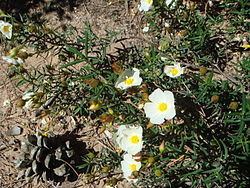Rank Species | Clade Angiosperms | |
Similar | ||
Cistus libanotis is a shrubby species of flowering plant in the family Cistaceae, with white flowers. It has been confused with Cistus clusii, which it resembles, resulting in some uncertainty in its distribution. Within Europe, it is native to south-west Portugal and south-west Spain.
Contents
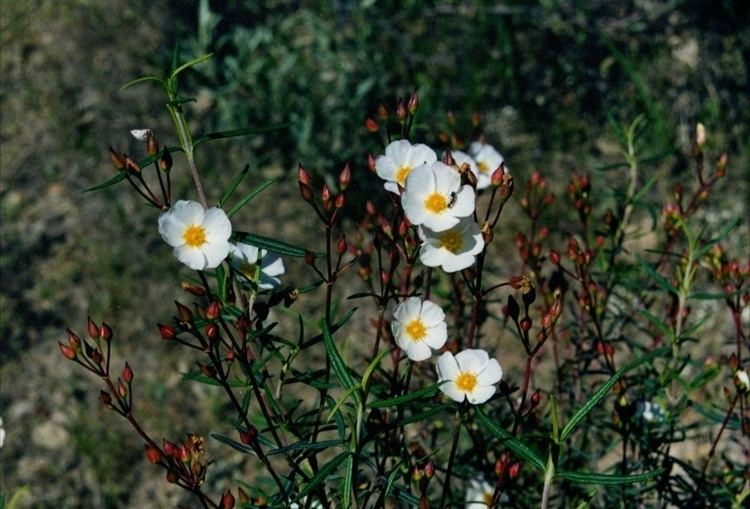
Description
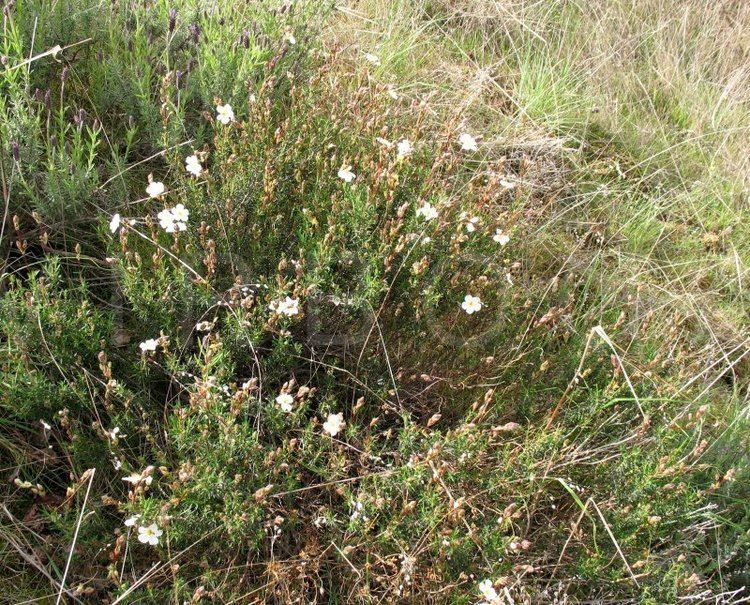
Cistus libanotis is a prostrate or less often erect shrub, up to 80–120 cm (2 ft 7 in–3 ft 11 in) tall. It leaves are dark green, long and thin in shape, usually 2–4 cm (0.8–1.6 in) long by 2–5 mm (0.08–0.20 in) wide and with turned under (revolute) margins. The upper surfaces of the leaves have only a few stellate hairs, particularly on the margins and the nerves; the lower surfaces have a conspicuous nerve and two dense bands of short stellate hairs. The flowers are arranged in cymes or whorls, the top group forming an umbel of three or four flowers. Each flower has three striped reddish sepals, 7–9 mm (0.3–0.4 in) long by 4–5 mm (0.2–0.2 in) wide, and five white petals with a yellow spot at the base, 10–13 mm (0.4–0.5 in) long by 9–12 mm (0.4–0.5 in) wide. The stamens are unequal in length, longer than the pistil. The style is short. The fruiting capsule is 6–7 mm (0.2–0.3 in) long, with relatively large seeds up to 1.8 mm (0.07 in) in diameter.
Taxonomy
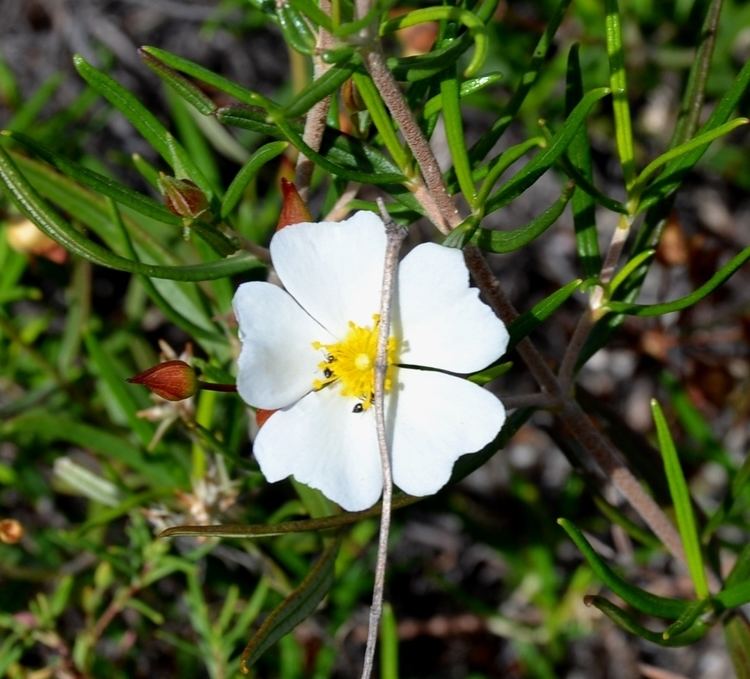
Cistus libanotis was first described by Carl Linnaeus in 1759. A different but similar species, Cistus clusii, has regularly been mis-identified as this species. A 2011 molecular phylogenetic study placed C. libanotis in the white and whitish pink clade of Cistus species. No strong relationship with C. clusii was found.
The specific epithet libanotis was the word used for rosemary by Pliny.
Distribution and habitat
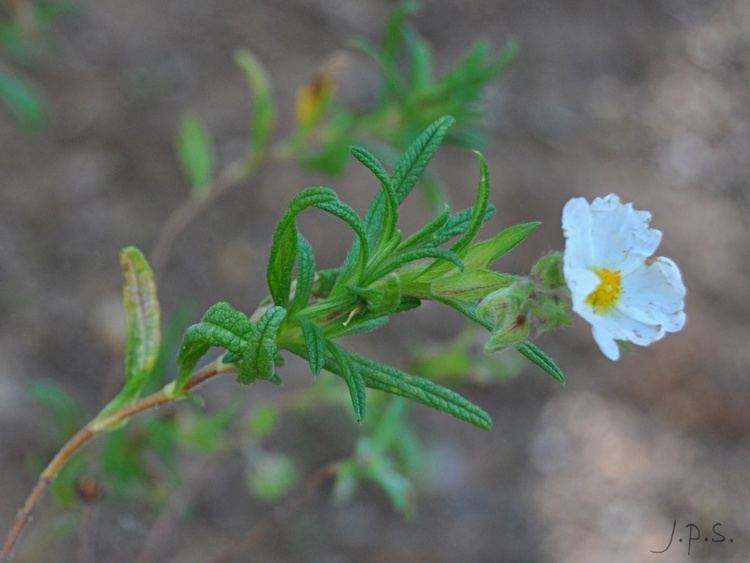
Cistus libanotis is native to south-west Portugal and south-west Spain. Its range has also been said to include "Argelia" (Spanish for Algeria), although this may refer to Cistus libanotis auct. non L., i.e. C. clusii. C. libanotis is typically found in dry, sandy areas of the Mediterranean coast, including Pinus halepensis and Quercus suber woodlands.

